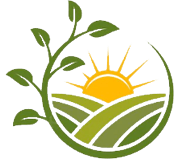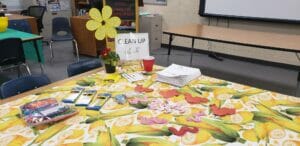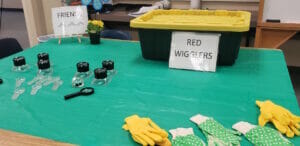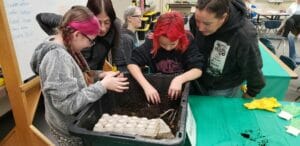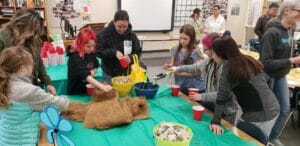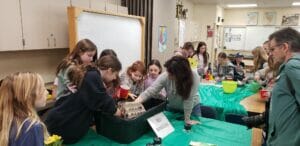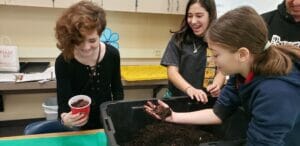Girls Rock STEM and FVF
Fort Vannoy Farms shared the honor of participating in the STEM Project for Girls Rock in Grants Pass, Oregon. Girls Rock is sponsored by three local groups: AAUW, The Soroptimist, and Zonta International. Local chapters of hosting groups are both very active supporters of community youth and of projects they sponsor. The outstanding organization and leadership that prepared the event was nothing short of spectacular!
Worm Farming
FVF Workers presented the benefits of Worm Farming at the March 11 event. Vermiculture through the observation and raising of Red Wiggler Worms is very interesting soil science. Families at Girls Rock learned about shelter, bedding, food, water, and temperatures that affect the worm bins. The girls also learned about the benefits of using worm castings to improve soil conditions. Then they set about creating their own personal sized worm farm.
How to Build a Worm Farm
Using a Red Solo Cup for the shelter, participants gather the essential materials. The next requirement is bedding. Shredded paper bags, shredded newspaper, coconut coir, pieces of egg cartons, and peat moss are excellent choices for bedding. After the bedding is filled, food and water must be added. Coffee grounds, chopped greens like kale or spinach, apple cores or peels, cucumber skins, and corn meal are excellent choices for feeding the growing worm communities. Water is necessary to moisten the bedding and to provide water to the worms. Finally, the Red Wiggler Worms are added to the Red Solo Cup Mini Worm Farm. A cap with a hole in the top covers the shelter in a neat and tidy package.
Worms Breathe Through Skin
Red Wigglers require oxygen to survive as the worms breathe through their skin! A moist environment enables the dissolved oxygen to pass through gas-permeable skin to the worm bloodstream which is known as cutaneous respiration. The Girls Rock participants learned all about the science behind worms and worm farming with a very interactive and light-hearted approach.
Worm Farming Benefits
Worm by-products called castings are very rich and nutritious to plants. Harvesting them to directly to side dress garden vegetables, potted flowers, and houseplants make great fertilizer. They feed beneficial microorganisms also in the soil and slowly release rich nutrients to the plants. Some of these nutrients are phosphorus, magnesium, calcium, and potassium. Additionally, micronutrients such as manganese, copper, zinc, cobalt and iron are present. Another benefit of worm farming is the creation of compost tea which is the extraction of extra water from the worm bin through a drainage system.
Girls Rock
The Girls Rock event is a great opportunity to spend time with the families of our community. The girls are inquisitive, curious, engaged and thoroughly delightful. Thank you to AAUW, Zonta, and The Soroptimist Grants Pass, Oregon chapters for hosting this event.
